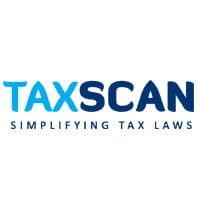Disregard of Additional Evidence By CIT(A): ITAT Remanda Ad Hoc Income Tax Disallowance to AO [Read Order]
The ITAT found that the CIT(A) had failed to give due weight to additional evidence submitted by the company and therefore sent the matter back to the AO for reconsideration
![Disregard of Additional Evidence By CIT(A): ITAT Remanda Ad Hoc Income Tax Disallowance to AO [Read Order] Disregard of Additional Evidence By CIT(A): ITAT Remanda Ad Hoc Income Tax Disallowance to AO [Read Order]](https://www.taxscan.in/wp-content/uploads/2024/10/ITAT-ITAT-Delhi-Ad-Hoc-Income-Tax-Income-tax-Income-Tax-Disallowance-Disregard-of-Additional-Evidence-taxscan.jpg)
In a recent judgment, the Income Tax Appellate Tribunal ( ITAT ) Delhi Bench "B" ruled in favor of an assessee and directed the matter regarding ad hoc income tax disallowances to be re-examined by the Assessing Officer ( AO ). The case, which pertains to the Assessment Year 2015-16, involved two primary disputes: the disallowance of business expenses and an enhancement of income based on reimbursements from the company’s Oman branch. The ITAT found that the Commissioner of Income Tax (Appeals) [CIT(A)] had failed to give due weight to additional evidence submitted by the company and therefore sent the matter back to the AO for reconsideration.
How to Compute Income from Salary with Tax Planning, Click Here
The assessee, C&C Construction Ltd., a company engaged in large-scale infrastructure projects across India and internationally, had originally declared a significant loss for the 2015-16 tax year, which was later revised. The assessee-company incurred various expenses related to the maintenance of its equipment, traveling, vehicle repairs, telephone services, and security provisions. During the assessment, the AO raised concerns over the lack of sufficient documentation to support these expenses and imposed an ad hoc disallowance of 10% of the total, amounting to ₹1,13,03,926. In addition to this, the AO made an enhancement of income, adding ₹4,96,84,717/- to the assessee-company's taxable income on the grounds that it had failed to properly account for reimbursements received from its Oman branch.
In response, the assessee contested both the disallowances and the income enhancement before the CIT(A). The assessee explained that the 10% disallowance had been reluctantly agreed to due to the limited time it had been given to collect documentation from various work sites scattered across the country and abroad. With only two days to respond to the AO's request, the assessee had faced logistical difficulties but later provided additional evidence to the CIT(A), including site-specific expenditure records. The assessee-company also obtained a certificate from its Chartered Accountant, clarifying that the ₹4,96,84,717/- represented internal adjustments between the head office and the Oman branch and did not affect taxable income since it was merely an inter-company transaction that canceled itself out.
How to Compute Income from Salary with Tax Planning, Click Here
Despite these explanations, the CIT(A) upheld the AO’s decisions. The CIT(A) concluded that since the company had agreed to the 10% disallowance during the assessment, it was valid, and the additional evidence provided was not sufficiently considered. The CIT(A) also enhanced the company’s income by the ₹4,96,84,717/- on the basis of the reimbursements, ignoring the assessee’s explanation that the amount was not taxable due to internal consolidation of accounts.
The bench of Mr Anubav Sharma and Mr M Balaganesh, after considering the facts of the case, observed that the CIT(A) had not properly accounted for the evidence presented. On the issue of the ₹4,96,84,717/-, the tribunal accepted the assessee-company's position that this amount had no effect on its taxable income, as it had been credited in the company’s head office books and was thus neutralized upon consolidation with the Oman branch accounts. The tribunal observed that the CIT(A)’s enhancement of the company's income was based on a misunderstanding of how the financials operated, and it was therefore unjustified.
How to Compute Income from Salary with Tax Planning, Click Here
As for the ad hoc disallowance of expenses, the ITAT recognized the practical challenges the assessee-company faced in assembling documentation from multiple locations within such a short timeframe. While the assessee had agreed to the disallowance under these challenging circumstances, the tribunal noted that such agreements should not override the fundamental principle that tax assessments must be based on statutory provisions rather than on the concessions of the parties involved.
Accordingly, the tribunal set aside the disallowance and remanded the matter to the AO for fresh adjudication, giving the assessee the opportunity to present further evidence in its defense.
To Read the full text of the Order CLICK HERE
Support our journalism by subscribing to Taxscan premium. Follow us on Telegram for quick updates
C&C Construction Ltd vs CIT(Appeals) , 2024 TAXSCAN (ITAT) 1173 , Shri Amarjeet Singh , Shri Piyush Tripathi

